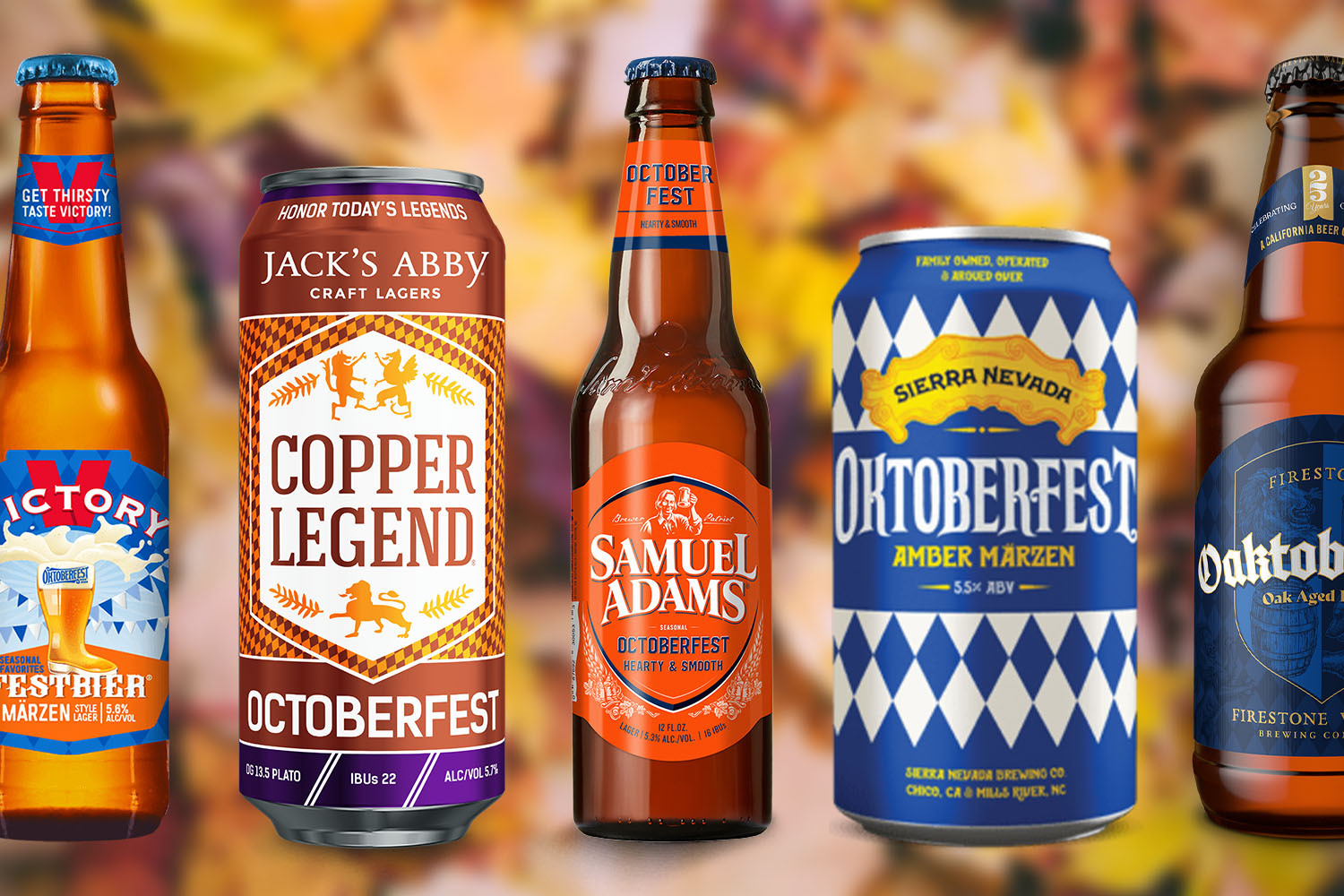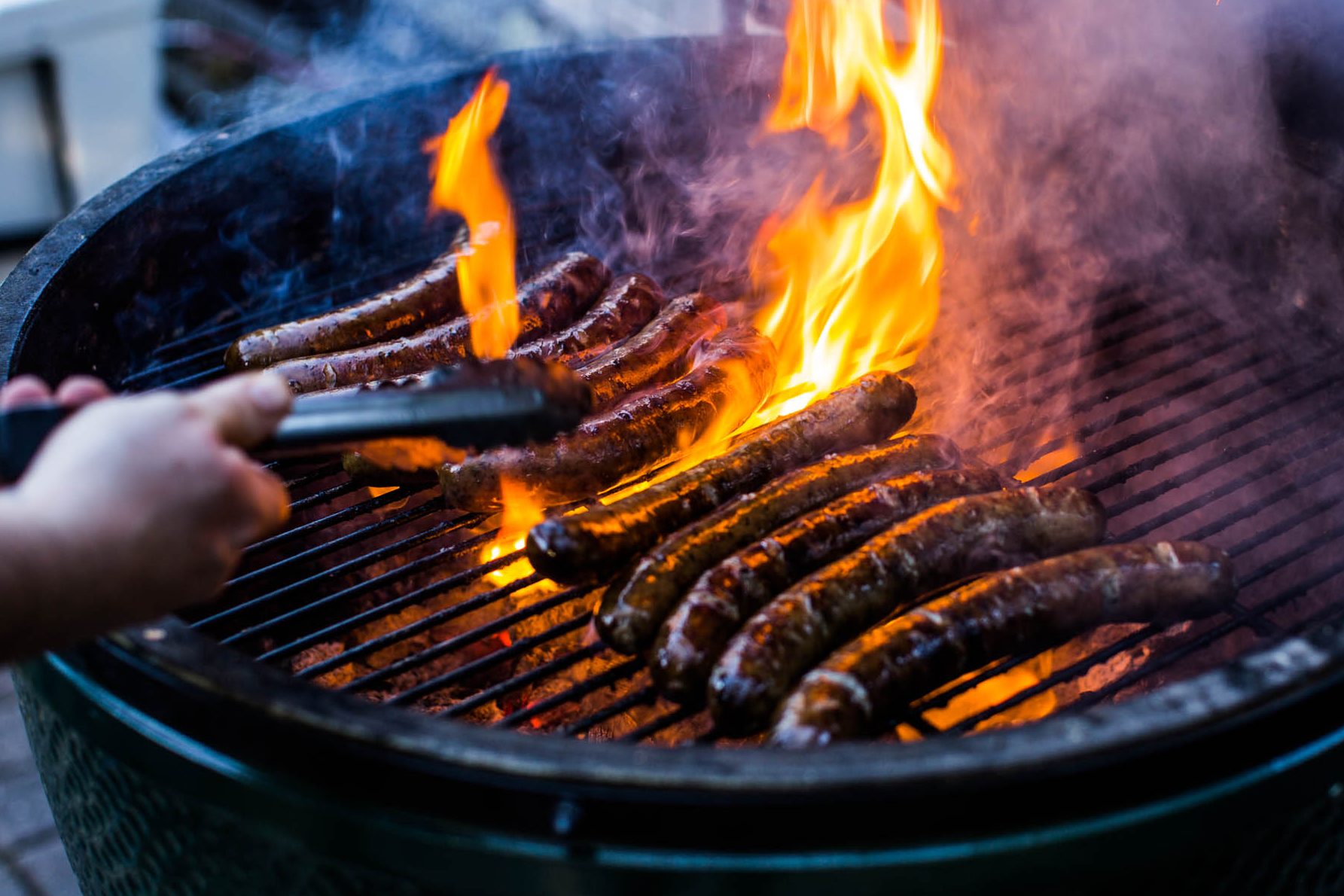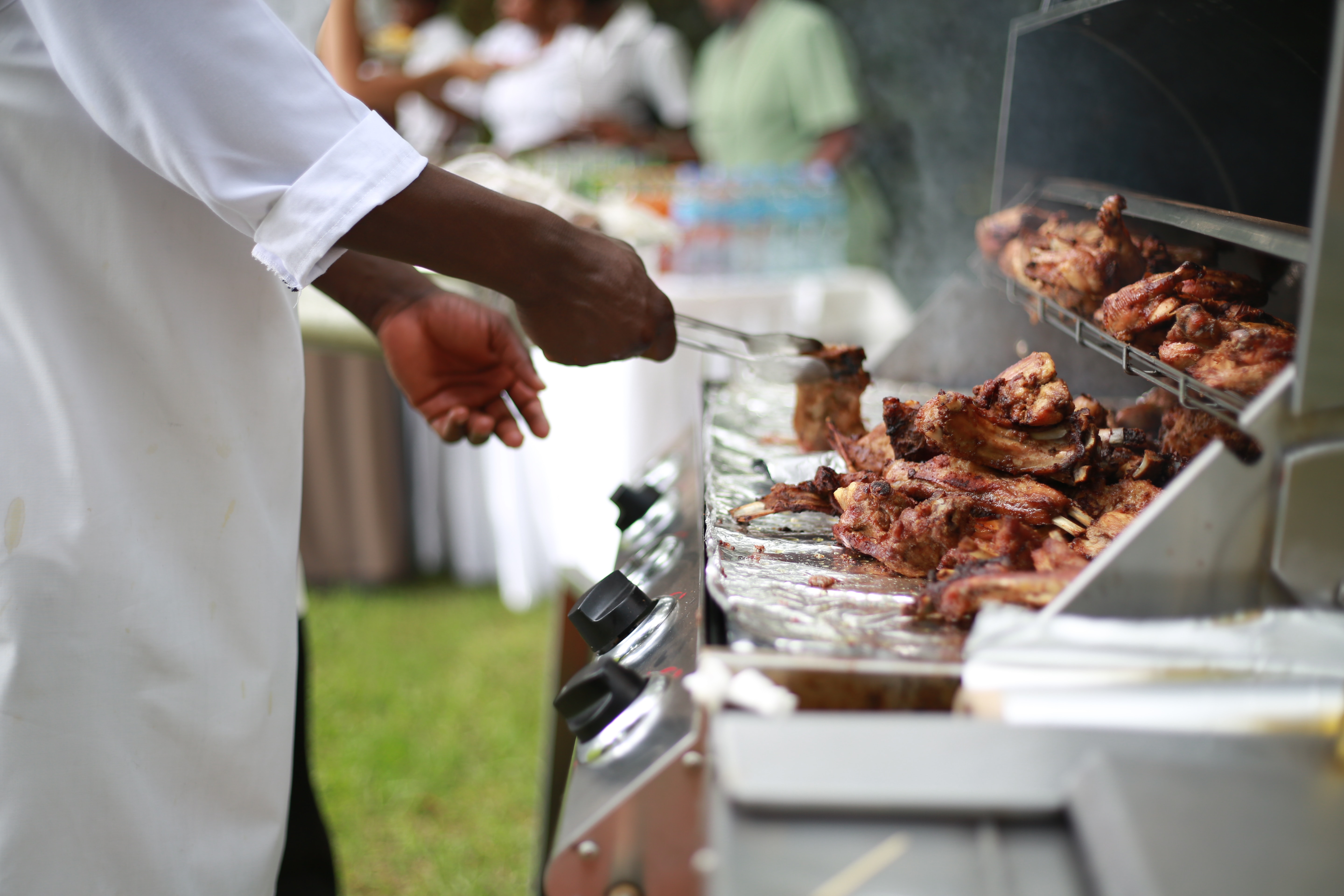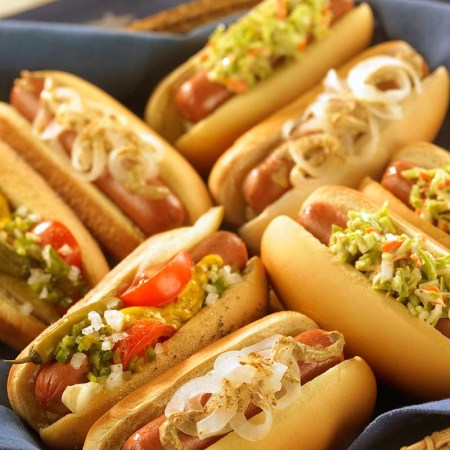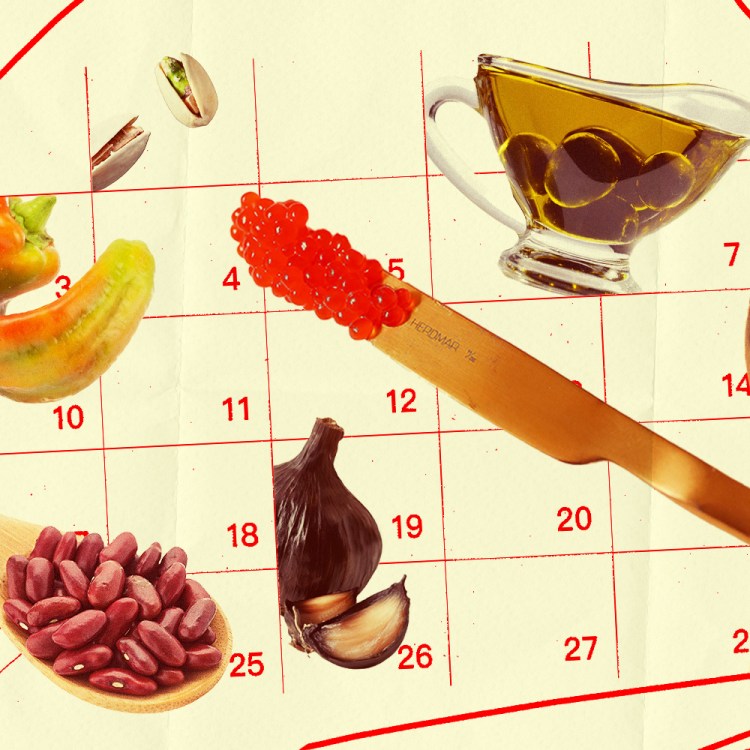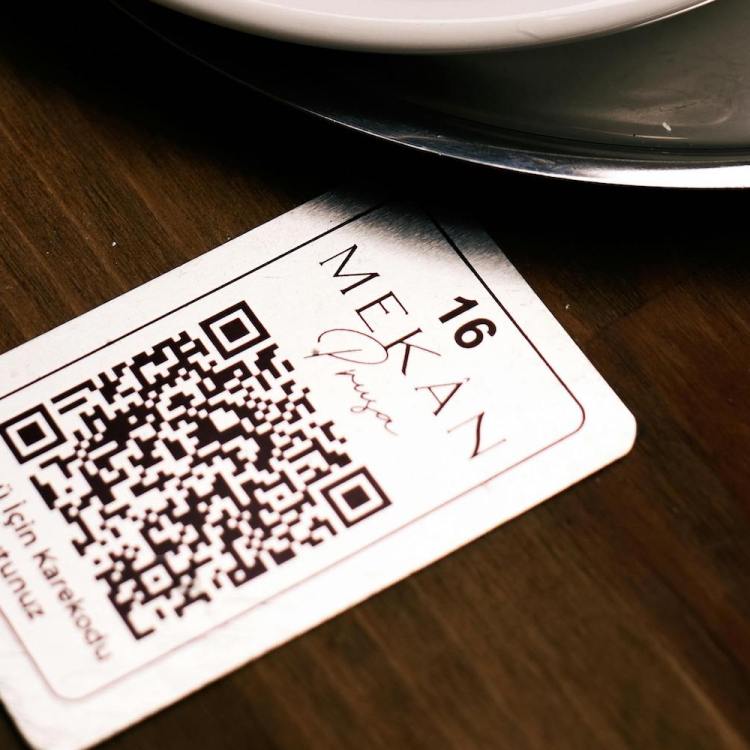You don’t need to know a whole lot about Germany to know that the country takes its sausages very seriously. But just how seriously is another thing entirely.
“It’s massive,” Jeremy Schaller, the third-generation owner of New York City’s famed Schaller & Weber butcher shop, tells InsideHook. “Basically the biggest protein commodity in Germany is pork. And that goes by tradition. The farmers are always pork. They really just love the product. They would use the hog casings or the intestine, and they would have grinders always in the farms and the little houses, all throughout Germany and the Black Forest and everywhere. Each region is a little bit segregated and very different. They take a lot of pride in their different little areas. They have different dialects, and each town also has their local beer. Every town almost has their own style of beer and their own style of sausage. And that goes back historically to almost a thousand years ago, and still everybody takes a lot of pride in that.”
Sausage is such a point of local pride, he adds, that it’s almost akin to sports rivalries between cities here in the States. “Everybody thinks their sausage and their beers are better than the other towns’,” he says.
With so many excellent local varieties, then, it’s a shame that what gets passed off as a German-style sausage here in America is so often inauthentic and inferior. “Companies like Johnsonville and Boar’s Head, it’s so different than my grandfather’s recipe is because it’s been so Americanized,” Schaller explains. “They’ve added more sugar. They’re adding fake smoke to a lot of the products like that. Just because they feel like that’s what the American market’s going to like, but that is not a real bratwurst like that you’d have in Munich or anything like that. So I feel like that’s kind of bastardized a lot of it and in a way it gives it a bad misconception because people with a really good palate would not eat that kind of food. So yeah, I wish that was just more traditional, the real way.”
Of course, you can find the real deal here in the States if you know what to look for. With that in mind, we asked Schaller to walk us through some of the most popular types of German sausages (and, yes, one’s technically Austrian). He gave us the nitty gritty on what they’re made of, how they’re traditionally prepared and what side dishes you can pair them with, just in time for you to get your own at-home Oktoberfest celebration in under the wire. Plus, scroll down for Schaller & Weber’s recipe for beer-braised bratwurst with mustard fried potatoes and red cabbage if you’re looking for a nice hearty meal to soak up all that booze. Prost!
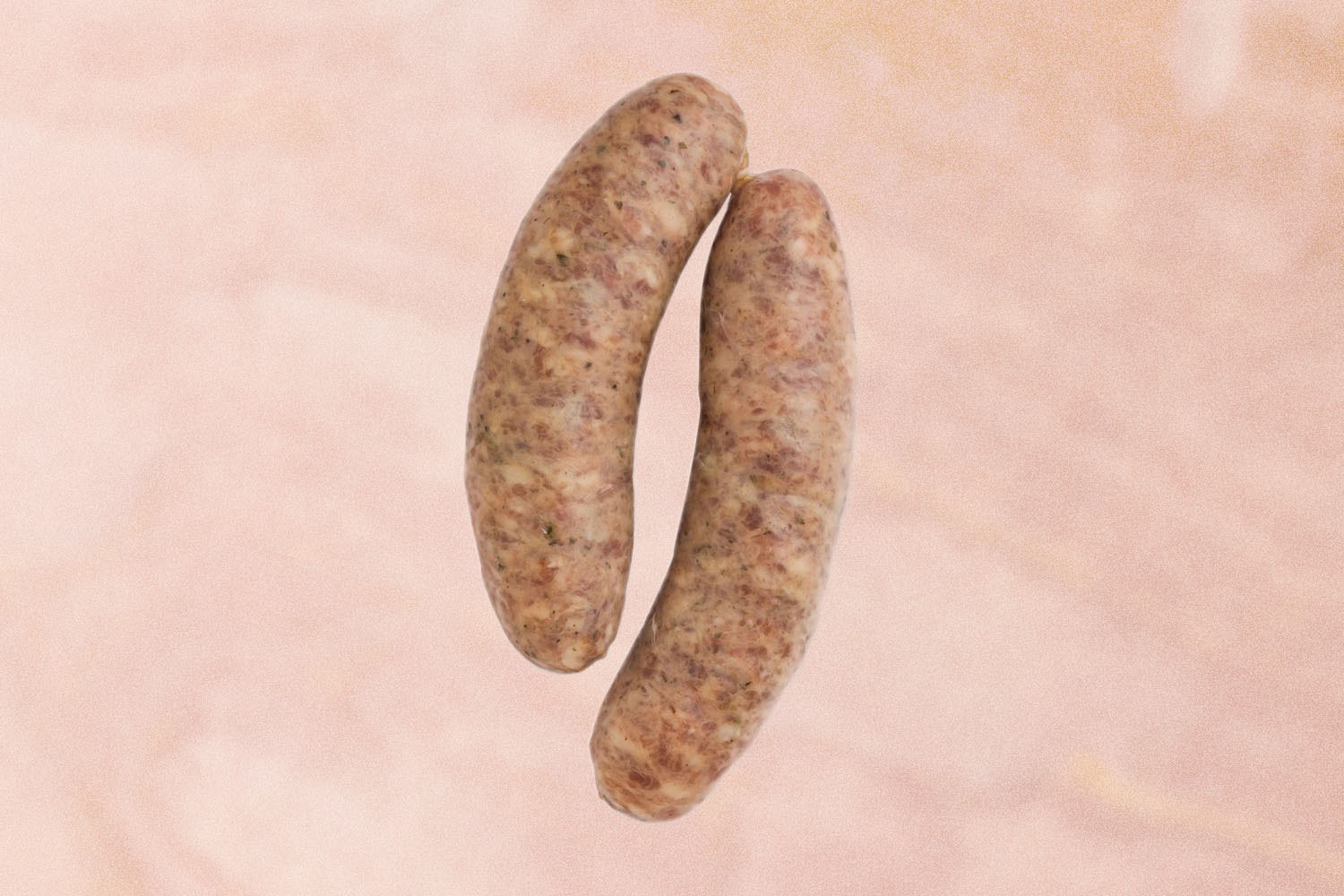
Bratwurst
Brats are easily the most well-known German-style sausage. “It’s what we call a white sausage, so it’s made of pork and veal,” Schaller explains. “The white sausage is not a smoked sausage. It’s just a fully cooked sausage. The bratwurst is a coarser grind. We do ours with nutmeg and a little bit of marjoram, and it’s pork, veal, and it’s a natural hog skin casing. Ours is our original recipe, which was brought here by my grandfather 84 years ago from Stuttgart and he worked for a butcher out there, fully trained since the time he was 15 years old, and he kept the same recipe when he came here. The only difference is we made ours antibiotic-free and all-natural, but those are the only variations we’ve ever done to it since we started as a company 84 years ago. That’s what you’ll find in Munich and Bavaria at Oktoberfest along with a couple others, but that is clearly the most widely known.”
Here in America, we traditionally eat them on a bun with mustard and sauerkraut, but the authentic German version is more specific. “Specifically you would use what in Germany they call a Dusseldorf-style mustard with that, which is horseradish mustard and sauerkraut,” Schaller says. “You could also do the red cabbage, you could do a white cabbage with it. In Germany, they would never do it with a bun. Here, obviously, that’s changed a lot. Obviously, any German sausages are paired well with a pretzel as well. So that is something else that you could do. Red cabbage, cucumber salad, potato salad, potato pancakes. Those are all great sides for any of these kinds of sausages. Bread dumplings too, roasted potatoes sometimes. But those are the traditional pairings.”
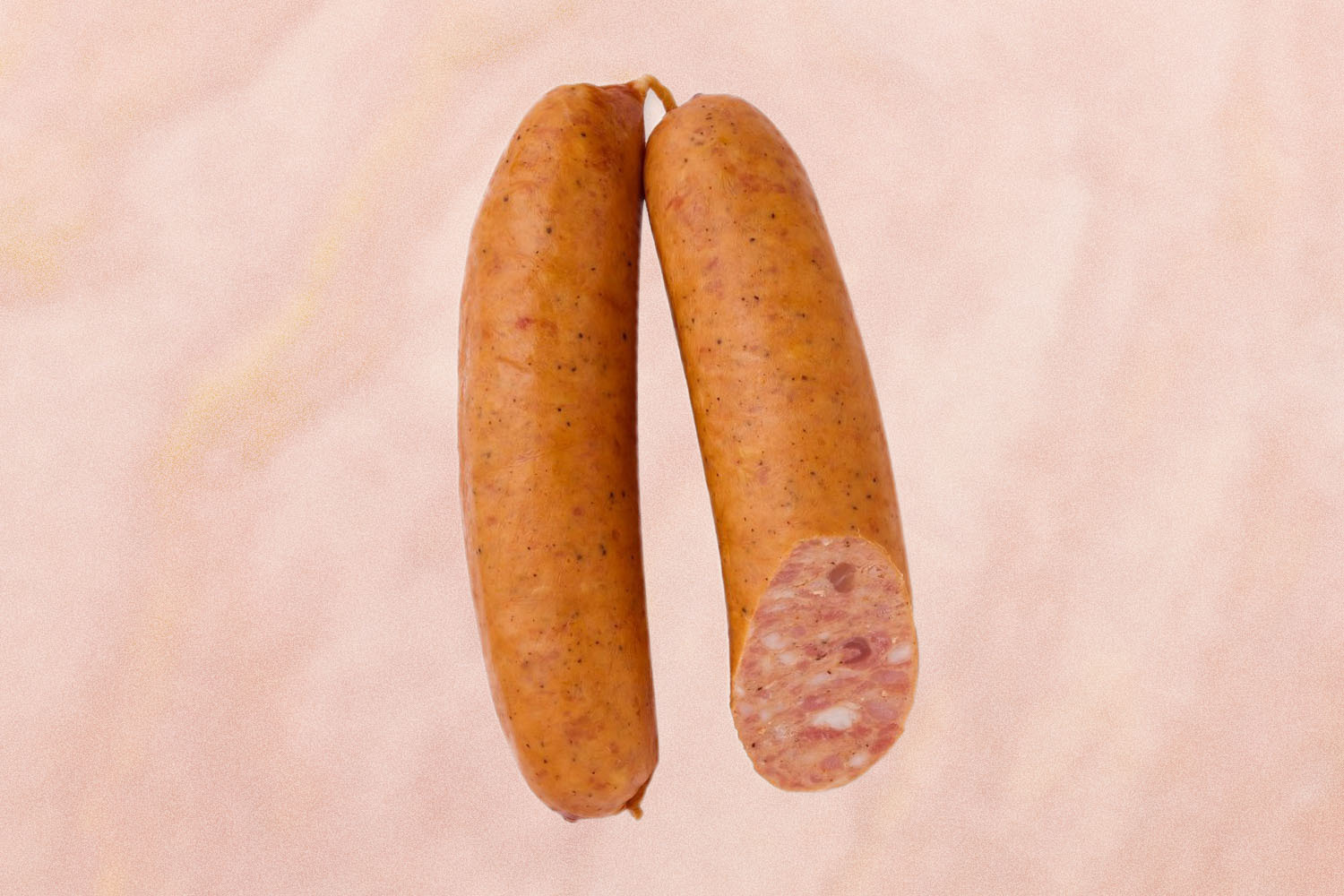
Bauernwurst
“The bauernwurst is a country-style sausage,” Schaller says. “We do ours with whole mustard seeds in it. That is not a white sausage; it’s a red sausage, which means that it’s smoked. We smoke ours with natural Hickory smoke, also in a hog casing. A coarser grind, because bauernwurst, basically means “country-style.” So, traditionally, they would make these in the country using a small sausage grinder. So that’s why it’s a coarser sausage, and the farmers would like make these in their country houses and farms.”
It’s made with pork, beef, pepper and garlic, and while it also pairs traditionally well with mustard and sauerkraut, it also turns up in French food occasionally — specifically in the Alsatian dish choucroute garnie.
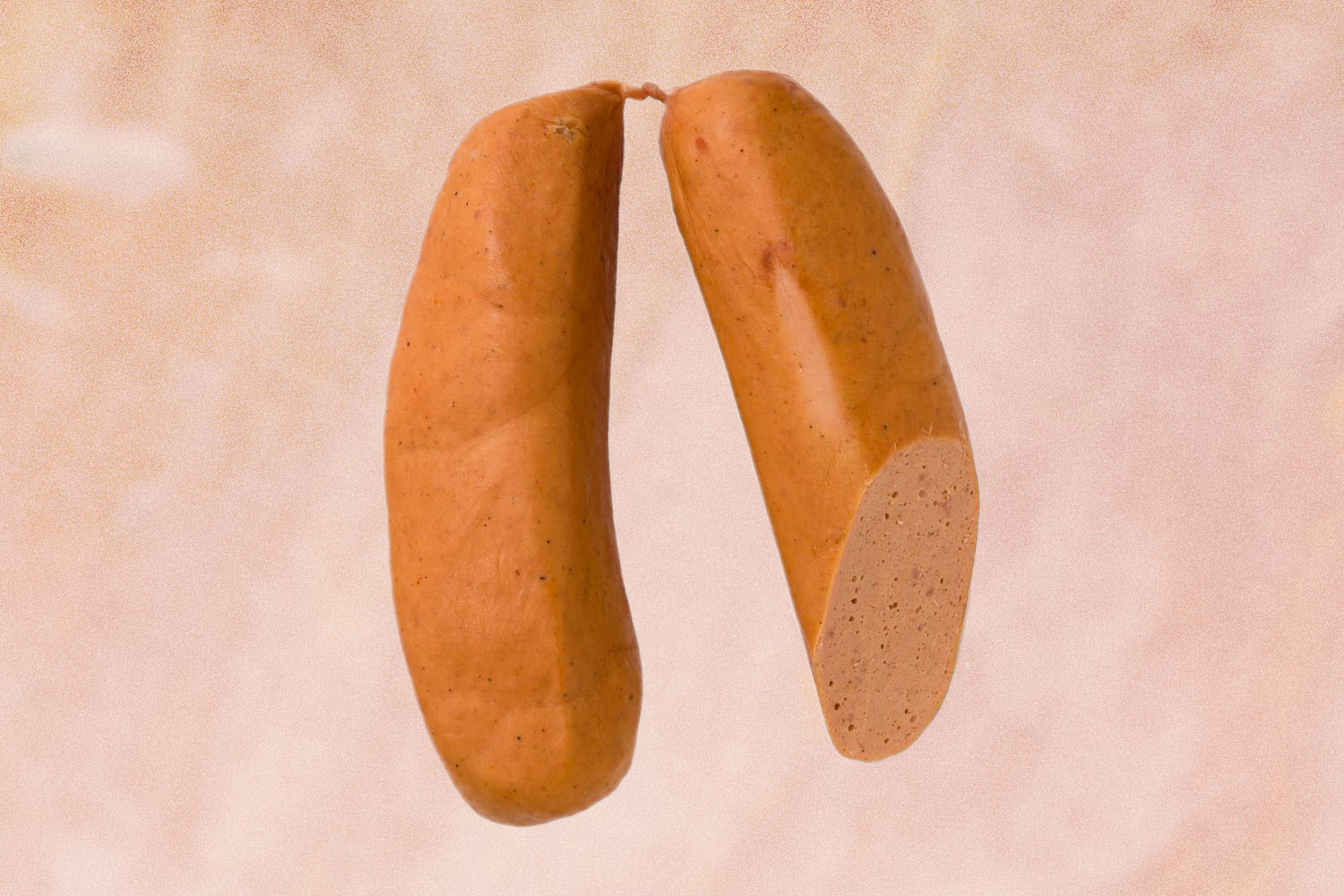
Knackwurst
“Knackwurst is a fine-emulsion smoked sausage,” Schaller notes. “Again, smoked with Hickory natural hog casing. It’s basically like a plump wiener or kind of a hot dog, but in Germany they’re always referred to as wieners. It’s plump. A lot of people will cut it up [into] small bites, and it can be used for currywurst as well. And that again is a fine emulsion, so it’s not coarse at all. It’s more like the texture of like a hot dog.”
It’s made with pork and beef, and as Schaller mentioned, you’ll frequently find it steamed, fried, covered in curry ketchup and served as a popular street-food dish known as currywurst. Some currywurst variations also include paprika or chopped onions, and it’s typically served with fries. (“In Berlin, there’s two kinds of currywurst,” Schaller notes. “The ones basically from East Berlin would be skinless currywursts, and the ones from West Berlin would be skin-on currywurst. It’s because in East Berlin, during the communist era, they couldn’t really afford the hog skins, so they made it like a little bit of a more efficient kind of style.”) Outside of currywurst, you’ll also find knackwurst on most traditional wurstplattes (German sausage platters).
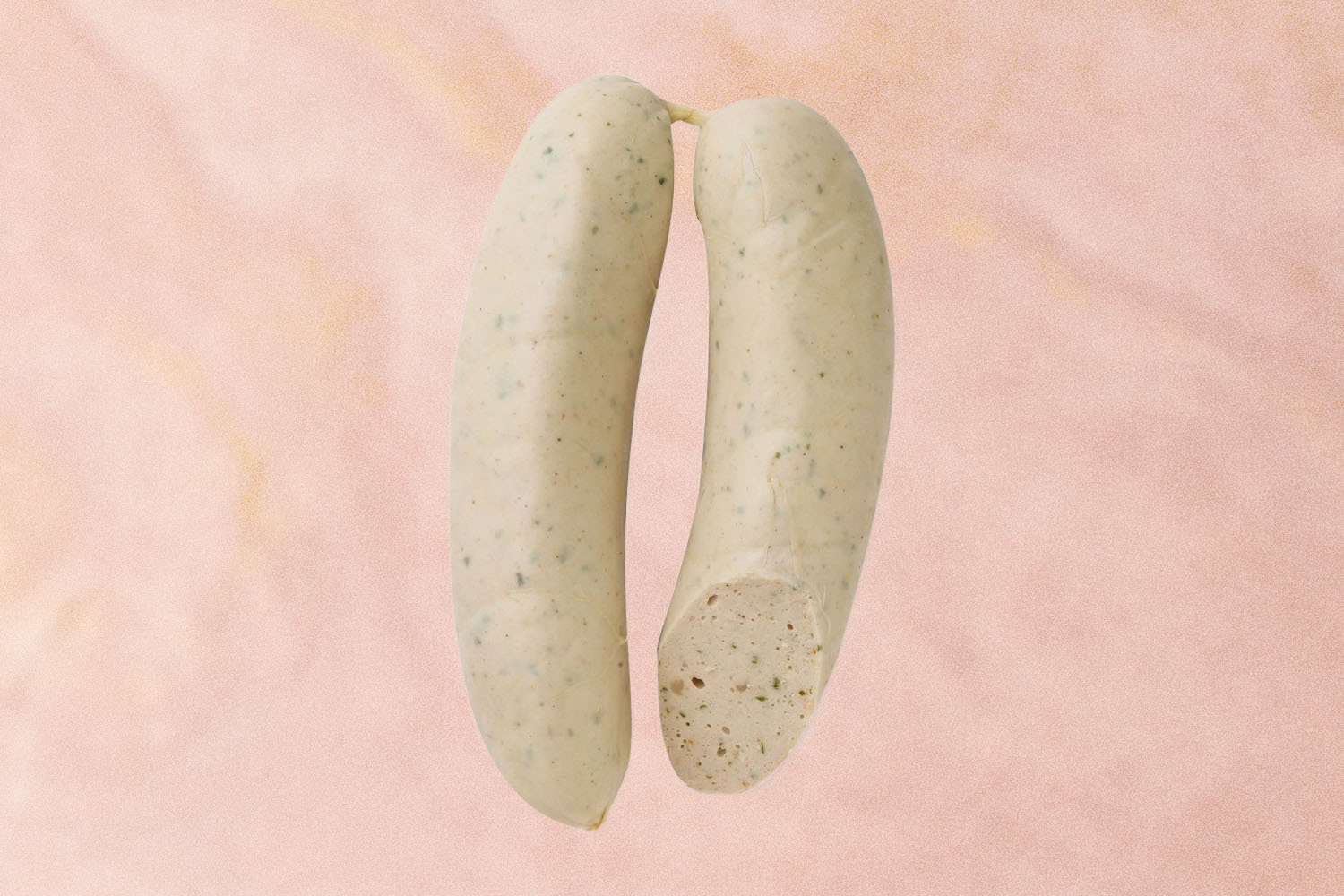
Weisswurst (also known as Bockwurst)
“Weisswurst is the very, very traditional Bavarian — specifically from Munich — sausage,” Schaller says. “Traditionally, you’re supposed to make them fresh in the morning and cook them only before 12 noon and then serve them boiled in a little serving bowl, usually two in a bowl. And then that bowl will come out with a side of Bavarian-style sweet mustard and sauerkraut and a pretzel. And that’s traditionally how it’s supposed to be packed and served in Germany. When you eat it, you have to cut the skin off. That’s the only one where it comes with the skin on and you would cut it off. And it’s to be boiled, never grilled or anything like that. Grilling it is a big faux pas.”
Weisswurst is made from a mixture of pork and veal, as well as parsley and mild spices. It’s a staple of traditional Oktoberfest celebrations, so even though you’re technically supposed to be eating them before noon, you shouldn’t be shy about pairing them with a nice German beer.
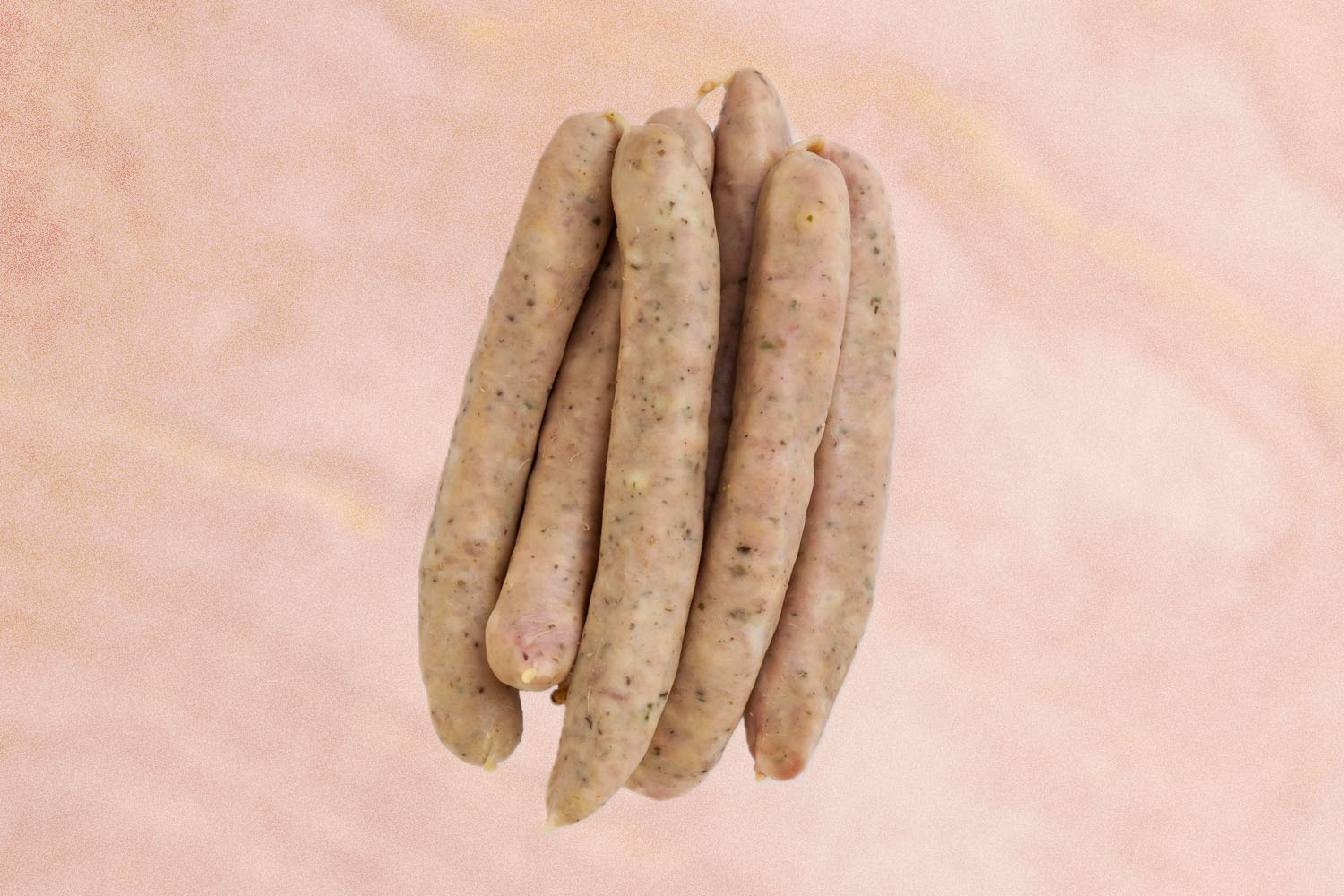
Nürnberger Bratwurst
As you might have guessed from the name, the Nürnberger bratwurst hails from the city of Nürnberg. “It’s more like what we know in America as a breakfast-style sausage,” Schaller says. “It’s that size. It always has the marjoram in it. That’s the main spice ingredient. It’s a coarser grind as well”
One legend says these tiny brats, which date back to the 1300s, were made so small so that innkeepers could sell them through the keyholes of their taverns after they were closed, but the real reason isn’t quite as fun — rising costs in the 16th century caused butchers to shrink the size of their sausages. If you want to sound like a local, you can order “Drei im Weckla” — “three in a bun.”

Blutwurst
“There’s two kinds of blutwurst,” Schaller explains. “There’s a blutwurst that comes in a ring, like a sausage ring, almost like a Polish kielbasa, and you cook it in the skin and you can make medallions with it or it’ll also get kind of mushy. And it comes like a pudding. That’s why a lot of times it’s referred to as a blood pudding. It is made usually traditionally with pork blood, and it has a lot of very peppery flavor to it. It’s also served traditionally with onions. And then there is the slicing blutwurst, which is more like a cold cut, and it’s meant to be served cold. Similar recipe, but it has bigger pieces of coarse fat in it.”
In Cologne, you’ll find blutwurst in a dish called Himmel Und Erde (“Heaven and Earth”), in which it’s served hot on a plate with applesauce and mashed potatoes, and in Berlin, hot blutwurst is mixed with liverwurst and potatoes and served up as Tote Oma (“Dead Grandma”).

Wiener
Besides bratwurst, wieners are probably the second-most common German — er, Austrian — sausage in American cuisine. (You’ve heard of a hot dog, right?) “The wiener is basically from Vienna. The Vienna wieners, that’s where the wiener originates,” Schaller says. “The frankfurter is a little different, but the wieners are a bit longer, skinnier, a fine emulsion, and always in a sheep casing so they’re very snappy. And ours, we like to do it with a little bit of peppery flavor. The traditional wiener is pork and beef, and in America it became more of a beef thing because it got very much accepted by Jewish culture in New York City. But traditionally, back in Austria, it’s going to be pork and beef.”
Chances are, if you’re familiar with hot dogs, you already know what to do with these. Toss some on a grill, throw them in a bun, and dress them up however you’d like.
Schaller & Weber’s Beer-Braised Bratwurst with Mustard-Fried Potatoes and Red Cabbage
Ingredients:
- (1) 8 oz. can Blue Point Zumfest Märzen Style Lager
- 2 diced shallots
- 1/3 cup Apple Cider Vinegar
- ¼ cup Schaller & Weber Düsseldorf Style Horseradish Mustard
- ¾ cup extra virgin olive oil
- Kosher Salt
- Freshly ground pepper
- ¾ lb Yukon Gold potatoes
- ¾ lb purple potatoes
- 6 Schaller & Weber Bratwurst
- Fresh thyme
- 8 oz. Schaller & Weber Red Cabbage
Instructions:
- Combine shallots and vinegar. Let stand for seven minutes.
- Stir in Schaller & Weber Düsseldorf Style Horseradish Mustard.
- Whisk in the oil and season with salt and pepper.
- In a pot of salted boiling water, cook the potatoes until tender (15 minutes)
- Drain the potatoes and break into chunks with a wooden spoon.
- Preheat a grill pan and add the bratwurst.
- Pour the Blue Point Zumfest Lager over the bratwurst
- Braise the bratwurst over a moderate heat, turning them until heated for 10 to 15 minutes
- Heat two tablespoons of oil. Add the potatoes and thyme
- Season with salt and pepper, and cook over a moderately high heat, turning, until golden and crisp (six to seven minutes)
- Remove the pan from heat, add half of the vinaigrette. Season with salt and pepper and toss evenly to coat
- Arrange the red cabbage on a serving platter. Scatter the potatoes and top with the bratwurst.
Every Thursday, our resident experts see to it that you’re up to date on the latest from the world of drinks. Trend reports, bottle reviews, cocktail recipes and more. Sign up for THE SPILL now.


